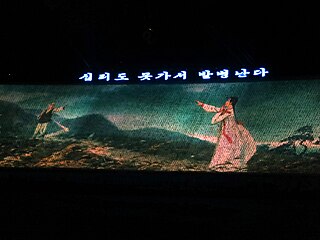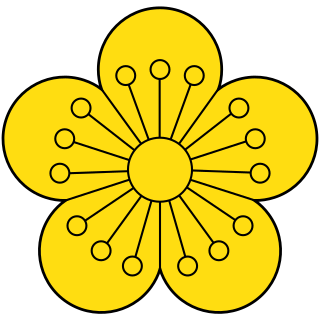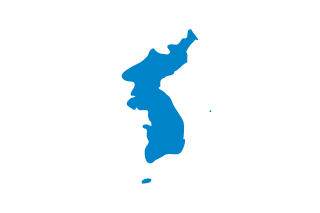 W
W"Arirang" is a Korean folk song. There are about 3,600 variations of 60 different versions of the song, all of which include a refrain similar to, "Arirang, arirang, arariyo " It is estimated the song is more than 600 years old.
 W
WThe Korean alphabet, known as Hangul in South Korea and Chosŏn'gŭl in North Korea, is a writing system for the Korean language created by King Sejong the Great in 1443. The letters for the five basic consonants reflect the shape of the speech organs used to pronounce them, and they are systematically modified to indicate phonetic features; similarly, the vowel letters are systematically modified for related sounds, making Hangul a featural writing system.
 W
WThe Imperial Seal of Korea or Ihwamun was one of the symbols of the Korean Empire. It was originally the emblem of the royal family and was subsequently used for the coat of arms of the short-lived empire. The symbol features a plum flower. Today, the seal is used as a symbol by the families' association of the Jeonju Yi clan, which was the royal family of Joseon dynasty and the imperial family of the Korean Empire.
 W
WKorean is an East Asian language spoken by about 80 million people, mainly Korean, as of 2020. It is the official and national language of both North Korea and South Korea, with different standardized official forms used in each country. It is a recognised minority language in the Yanbian Korean Autonomous Prefecture and Changbai Korean Autonomous County of Jilin Province, China. It is also spoken in parts of Sakhalin, Russia and Central Asia.
 W
WThe Korean Unification Flag is a flag designed to represent all of Korea when North and South Korea participate as one team in sporting events.
 W
WThe "Patriotic Hymn of the Great Korean Empire" was the national anthem of Korea during the 1900s. It was the first and only national anthem of a unified Korean state to date.
 W
WTaegeuk is a Korean term cognate with the Chinese term Taiji, meaning "supreme ultimate", although it can also be translated as "great polarity/duality". The symbol was chosen for the design of the Korean national flag in the 1880s, swapping out the black and white color scheme often seen in most taijitu illustrations and substituting blue and red, respectively, along with a horizontal separator, as opposed to vertical.